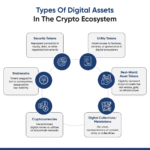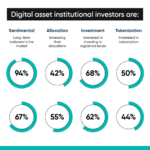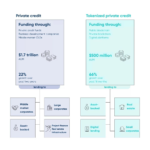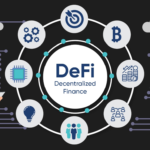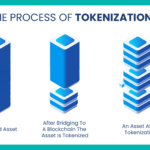Introduction
The emergence of digital assets has revolutionized the financial landscape, offering investors unprecedented opportunities for growth and diversification. As traditional markets continue to converge with the digital realm, understanding and mastering digital asset investments have become imperative for investors seeking to thrive in today’s dynamic environment. This white paper serves as a strategic guide, providing comprehensive insights into various aspects of digital asset investments, including asset classes, investment strategies, portfolio construction, risk management, regulatory considerations, and the future of digital finance.
Understanding Digital Asset Investments
Digital assets encompass a broad spectrum of financial instruments that exist solely in digital form. This section provides an overview of three primary categories of digital assets: cryptocurrencies, security tokens, and stablecoins.
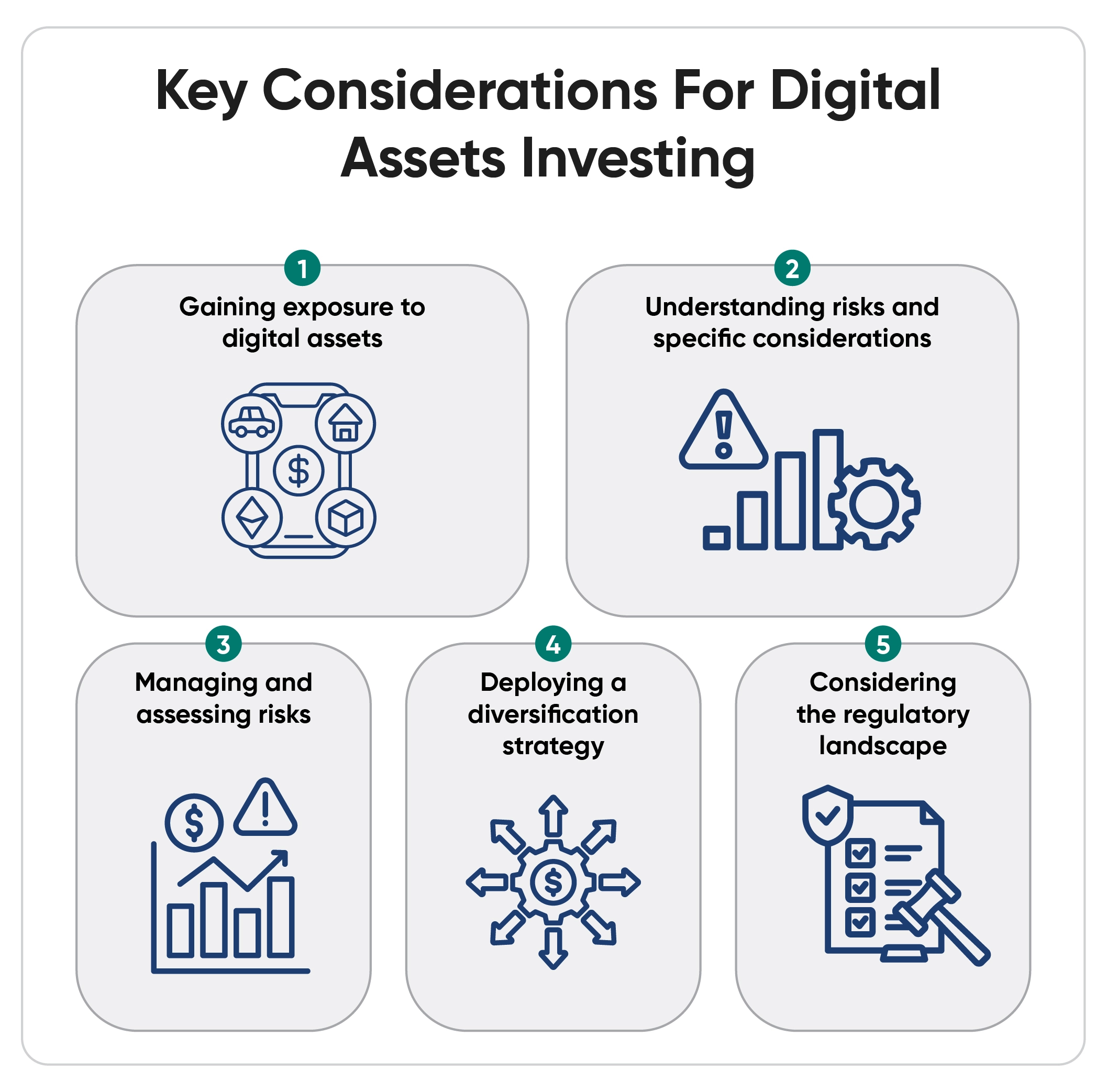
Cryptocurrencies
Cryptocurrencies, pioneered by Bitcoin in 2009, are decentralized digital currencies that utilize cryptographic techniques to secure transactions and control the creation of new units. Bitcoin, Ethereum, and Ripple are among the most well-known cryptocurrencies, each with distinct features and use cases. While Bitcoin primarily serves as a store of value and a medium of exchange, Ethereum facilitates smart contracts and decentralized applications (DApps). Ripple, on the other hand, focuses on enabling fast and low-cost international money transfers.
Cryptocurrencies operate on blockchain technology, a distributed ledger system that ensures transparency, immutability, and security. Transactions are validated by network participants through a process known as mining or staking, depending on the consensus mechanism employed. Cryptocurrencies offer several advantages, including borderless transactions, lower fees, and increased financial inclusion. However, they also pose risks such as price volatility, regulatory uncertainty, and security vulnerabilities.
Cryptocurrencies are typically traded on digital asset exchanges, which are platforms that facilitate the buying, selling, and trading of various digital assets. The trading process involves the following steps:
Selection of Exchange: Traders first choose a cryptocurrency exchange that meets their requirements in terms of security, liquidity, trading pairs, and user experience. Popular exchanges include Binance, Coinbase, Kraken, and Bittrex.
Account Creation: Traders need to create an account on the chosen exchange by providing personal information, verifying their identity, and securing their account with two-factor authentication (2FA) for added security.
Deposit Funds: Once the account is set up, traders can deposit funds into their exchange wallet using fiat currency (e.g., USD, EUR) or other cryptocurrencies. Deposits are usually made via bank transfer, credit/debit card, or cryptocurrency transfer from an external wallet.
Market Analysis: Before trading, traders conduct market analysis to assess price trends, market sentiment, and potential entry/exit points. This analysis may involve technical analysis (e.g., chart patterns, indicators) and fundamental analysis (e.g., project fundamentals, news events).
Placing Orders: Traders can place different types of orders on the exchange, including market orders, limit orders, and stop-loss orders. Market orders execute immediately at the current market price, while limit orders allow traders to specify a price at which they are willing to buy or sell. Stop-loss orders automatically trigger a sell order when the price reaches a predefined level to limit losses.
Execution: Once orders are placed, they are matched with counterparties on the exchange, and transactions are executed accordingly. Trades are recorded on the exchange’s order book, and traders can monitor their positions in real time through the trading interface.
Withdrawal: After trading, traders can withdraw their funds or cryptocurrencies from the exchange to their personal wallets for safekeeping or further transactions. Withdrawals are subject to withdrawal limits and processing times set by the exchange.
Security Tokens
Security tokens represent ownership rights to underlying assets, such as equities, real estate, or debt, and are subject to securities regulations. Unlike utility tokens, which provide access to a product or service, security tokens derive their value from the performance of the underlying asset. Security token offerings (STOs) have gained traction as a regulated means of fundraising, offering investors enhanced transparency, liquidity, and compliance with securities laws.
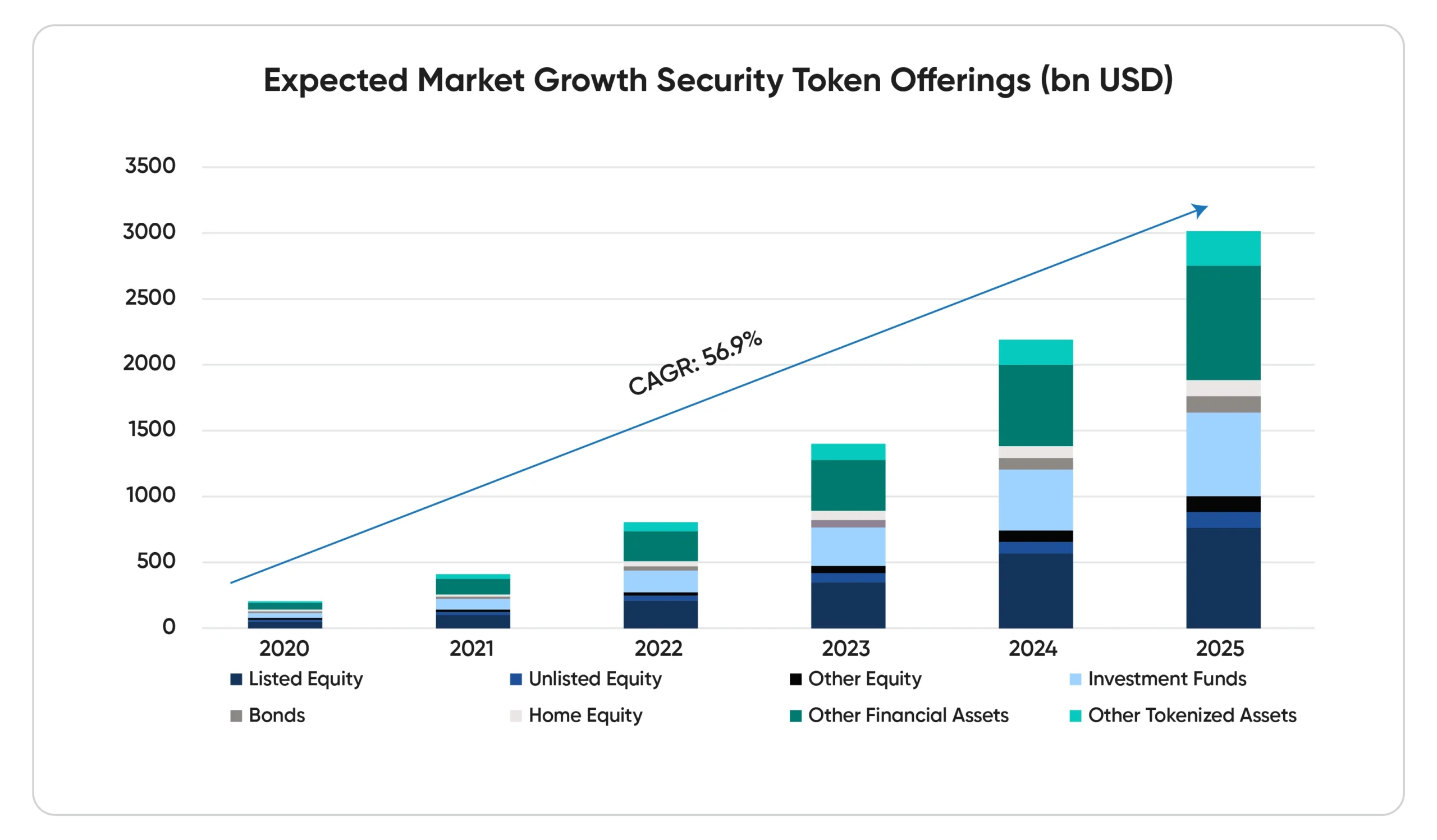
Security tokens offer several benefits over traditional securities, including fractional ownership, automated compliance, and increased accessibility to global investors. Moreover, they enable the tokenization of illiquid assets, unlocking liquidity and diversification opportunities for investors. However, regulatory compliance, liquidity constraints, and market fragmentation remain key challenges in the security token ecosystem.
Security tokens are traded on specialized platforms known as security token exchanges or alternative trading systems (ATS) that are compliant with securities regulations. The trading process for security tokens involves the following steps:
Platform Selection: Traders choose a regulated security token exchange or ATS that is authorized to facilitate trading in security tokens and compliant with applicable securities laws.
Registration: Traders register on the selected platform and undergo the necessary KYC (Know Your Customer) and AML (Anti-Money Laundering) procedures to verify their identity and eligibility to trade securities.
Compliance: Traders ensure compliance with securities regulations governing the trading of security tokens, including accredited investor requirements, investment limits, and reporting obligations.
Tokenization: Security tokens represent ownership rights to underlying assets, such as equities, real estate, or debt, and are issued and traded on blockchain platforms compliant with securities regulations.
Order Placement: Traders place orders on the security token exchange using the trading interface provided by the platform, specifying the quantity and price at which they are willing to buy or sell security tokens.
Trade Execution: Orders are matched with counterparties on the exchange, and transactions are executed according to the prevailing market conditions and order book dynamics. Trade settlement and clearing processes may involve additional regulatory oversight and compliance procedures.
Custody and Security: Security token exchanges implement robust custody solutions and security protocols to safeguard client assets and ensure compliance with regulatory requirements. Institutional-grade custody providers offer multi-signature wallets, insurance coverage, and institutional-grade security measures to protect client assets from theft, loss, and unauthorized access.
Stablecoins
Stablecoins are digital assets designed to maintain a stable value by pegging their value to fiat currencies, commodities, or other cryptocurrencies. Stablecoins address the volatility inherent in cryptocurrencies, making them suitable for everyday transactions, remittances, and hedging purposes. Tether (USDT), USD Coin (USDC), and Dai (DAI) are prominent examples of stablecoins, each backed by reserves of fiat currency or collateralized crypto assets.
Stablecoins offer benefits such as price stability, fast and low-cost transactions, and programmability. They serve as a bridge between the traditional financial system and the crypto economy, facilitating seamless integration and interoperability. However, concerns regarding centralization, regulatory scrutiny, and reserve transparency have raised questions about the long-term viability of stablecoins.
Stablecoins are primarily traded on cryptocurrency exchanges like other digital assets, but their trading dynamics may differ slightly due to their pegged nature and focus on price stability. Here’s how stablecoin trading typically works:
Exchange Selection: Traders choose a cryptocurrency exchange that supports trading pairs involving stablecoins, such as USDT/USD, USDC/BTC, or DAI/ETH.
Account Setup: Similar to cryptocurrency trading, traders create an account on the chosen exchange, undergo identity verification, and secure their account with 2FA.
Deposit Funds: Traders deposit funds into their exchange wallet in the form of stablecoins (e.g., USDT, USDC) or other cryptocurrencies that are traded against stablecoins. Deposits can be made through various payment methods supported by the exchange.
Market Analysis: Traders analyze market conditions, including stablecoin prices relative to their pegged assets (e.g., USD), liquidity levels, and arbitrage opportunities across different exchanges to inform their trading decisions.
Order Placement: Traders place orders on the exchange based on their trading strategy, utilizing market orders, limit orders, or other order types to buy or sell stablecoins at desired prices.
Execution: Orders are matched with counterparties on the exchange, and transactions are executed according to the prevailing market conditions and order book dynamics.
Withdrawal: After trading, traders can withdraw their funds from the exchange, either in the form of stablecoins or other cryptocurrencies, depending on their preferences and trading activities.
Investment Strategies for Digital Assets
Investing in digital assets requires a strategic approach tailored to the unique characteristics of this emerging asset class. This section explores various investment strategies, including long-term HODL-ing and short-term trading techniques.
Long-Term Investment Strategies
Long-term investment strategies involve acquiring digital assets with the intention of holding them for an extended period, typically several years or more. These strategies focus on capturing the potential upside of promising projects and emerging trends while minimizing short-term volatility and market fluctuations. Here are some detailed long-term investment strategies for digital assets:
Dollar-Cost Averaging (DCA)
Dollar-cost averaging (DCA) is a disciplined investment strategy that involves regularly investing a fixed amount of capital into digital assets at predetermined intervals, regardless of price fluctuations. DCA helps mitigate the impact of market volatility and allows investors to accumulate assets gradually over time. Here’s how DCA works in practice:
Example:
Suppose an investor decides to invest $1,000 in Bitcoin every month using the DCA strategy. Regardless of whether the price of Bitcoin is high or low, the investor purchases $1,000 worth of Bitcoin each month.
If the price of Bitcoin is high, the investor will purchase fewer Bitcoin units with $1,000.
If the price of Bitcoin is low, the investor will purchase more Bitcoin units with $1,000.
Over time, DCA helps smooth out the effects of market volatility and can result in a lower average cost per unit of the digital asset. This strategy is particularly suitable for investors who prefer a passive approach to investing and seek to build a long-term investment portfolio gradually.
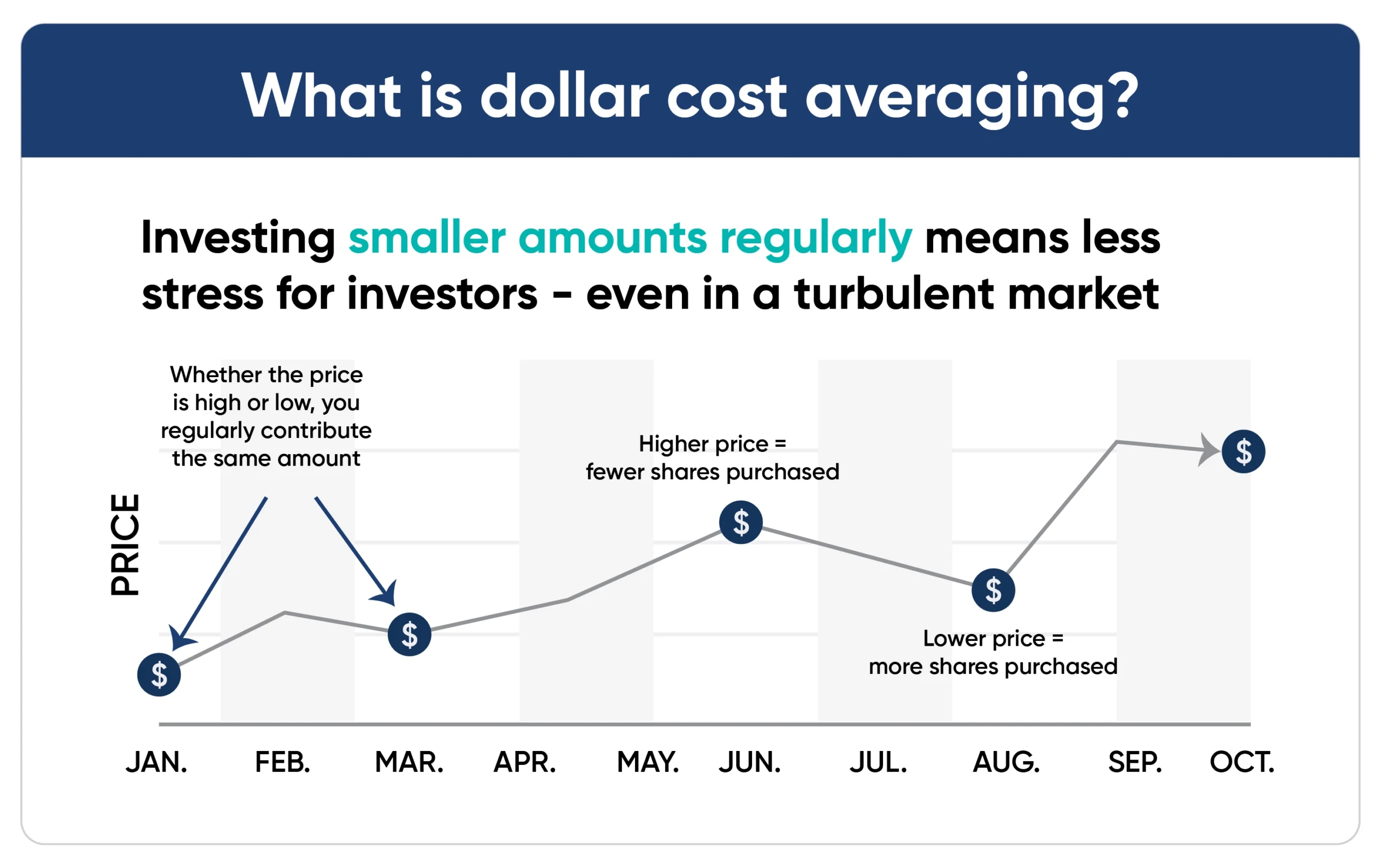
Fundamental Analysis
Fundamental analysis involves evaluating the intrinsic value and growth potential of digital assets based on factors such as technology, team, market demand, and adoption trends. Fundamental analysis helps identify undervalued assets with strong fundamentals and long-term growth prospects. Here’s how fundamental analysis can be applied in practice:
Example:
Suppose an investor is considering investing in Ethereum (ETH) based on its fundamental attributes. The investor conducts thorough research on Ethereum’s technology, including its smart contract capabilities, scalability solutions, and developer ecosystem.
The investor evaluates Ethereum’s network activity, including the number of transactions, decentralized applications (DApps), and active addresses.
The investor assesses Ethereum’s team, including its development community, leadership, and governance structure.
The investor analyzes market demand for Ethereum, considering factors such as institutional adoption, developer interest, and industry partnerships.
Based on their findings, the investor concludes that Ethereum has strong fundamentals and long-term growth potential, making it an attractive investment opportunity for the long term.
Fundamental analysis requires a deep understanding of the underlying technology, market dynamics, and competitive landscape of digital assets. It is essential for investors to conduct thorough due diligence and research before making long-term investment decisions based on fundamental factors.
Selective Portfolio Building
Selective portfolio building involves identifying and investing in a curated selection of digital assets with strong fundamentals, diverse use cases, and promising growth prospects. Instead of holding a wide range of digital assets, investors focus on a select few projects with high conviction and long-term potential. Here’s how selective portfolio building can be implemented:
Example:
Suppose an investor decides to build a selective portfolio of digital assets consisting of Bitcoin (BTC), Ethereum (ETH), and Polkadot (DOT) based on their unique features and growth prospects.
Bitcoin (BTC): The investor views Bitcoin as a store of value and a hedge against inflation, given its scarcity, security, and adoption as digital gold.
Ethereum (ETH): The investor believes in Ethereum’s potential to revolutionize decentralized finance (DeFi), tokenization, and smart contracts, driving innovation and adoption in the blockchain ecosystem.
Polkadot (DOT): The investor is bullish on Polkadot’s interoperability, scalability, and governance features, anticipating its role as a leading platform for cross-chain communication and decentralized applications (DApps).
By selectively investing in digital assets with strong fundamentals and complementary use cases, investors can build a diversified portfolio tailored to their long-term investment objectives and risk tolerance.
Periodic Rebalancing
Periodic rebalancing involves adjusting the asset allocation of a portfolio over time to maintain target risk levels and capture opportunities arising from market fluctuations. Rebalancing ensures that the portfolio remains aligned with the investor’s long-term investment strategy and objectives. Here’s how periodic rebalancing can be executed:
Example:
Suppose an investor initially allocates 60% of their portfolio to Bitcoin (BTC), 30% to Ethereum (ETH), and 10% to Polkadot (DOT) based on their long-term investment strategy.
After a year, the performance of the digital assets has varied, with Bitcoin (BTC) outperforming Ethereum (ETH) and Polkadot (DOT).
To rebalance the portfolio, the investor sells a portion of their Bitcoin (BTC) holdings to bring the allocation back to 60% and uses the proceeds to increase their allocation to Ethereum (ETH) and Polkadot (DOT) accordingly.
By periodically rebalancing the portfolio, investors can capitalize on market trends, manage risk, and optimize returns over the long term. Rebalancing should be conducted based on predefined criteria and in accordance with the investor’s investment objectives and risk tolerance.
Short-Term Trading Strategies
Short-term trading strategies aim to profit from the short-term price movements of digital assets by actively buying and selling them within relatively short timeframes, ranging from minutes to days. These strategies require a deep understanding of market dynamics, technical analysis, and risk management principles. Here are some detailed short-term trading strategies for digital assets:
Trend Following
Trend following is a popular short-term trading strategy that involves identifying and capitalizing on established price trends using technical indicators. Traders seek to ride the momentum of the market by entering positions in the direction of the prevailing trend and exiting before trend reversals occur. Here’s how trend following can be implemented:
Example:
Suppose a trader identifies an uptrend in the price of Bitcoin (BTC) based on technical indicators such as moving averages, relative strength index (RSI), and MACD (Moving Average Convergence Divergence).
The trader waits for a pullback or consolidation phase within the uptrend and enters a long position when the price retraces to a key support level or shows signs of upward momentum.
The trader sets a stop-loss order below the recent swing low to limit potential losses in case the trend reverses.
The trader aims to ride the uptrend until signs of exhaustion or divergence emerge on the technical indicators, signaling a potential trend reversal.
Once the uptrend loses momentum or shows signs of weakness, the trader exits the position and takes profits before the trend reverses.
By following the trend and aligning with market momentum, trend-following traders aim to capture short-term profits while minimizing downside risk.
Momentum Trading
Momentum trading is a short-term trading strategy that focuses on exploiting rapid price movements and market inefficiencies driven by short-term news events, sentiment shifts, or liquidity imbalances. Traders aim to capitalize on short-term price fluctuations and generate alpha by entering and exiting positions quickly. Here’s how momentum trading can be executed:
Example:
Suppose a trader identifies a short-term bullish catalyst, such as a positive news announcement or a significant increase in trading volume, for a specific cryptocurrency like Ethereum (ETH).
The trader quickly enters a long position in Ethereum (ETH) to capitalize on the bullish momentum generated by the news event or volume spike.
The trader sets a profit target based on technical levels or price objectives derived from Fibonacci retracement levels, pivot points, or previous swing highs.
The trader closely monitors the price action and volume dynamics to gauge the strength of the bullish momentum and assess potential exit points.
Once the price reaches the profit target or shows signs of exhaustion, the trader exits the position and takes profits before the momentum wanes.
Momentum traders rely on rapid execution, technical analysis, and market intuition to capitalize on short-term price movements and exploit trading opportunities as they arise.
Scalping
Scalping is a high-frequency trading strategy that involves making small, quick trades to capture tiny price movements and generate profits from short-term market fluctuations. Scalpers aim to profit from the bid-ask spread and market liquidity by entering and exiting positions rapidly. Here’s how scalping can be practiced:
Example:
Suppose a scalper focuses on trading the Bitcoin (BTC) market on a highly liquid exchange with tight spreads and high trading volume.
The scalper monitors the order book and price action on the exchange to identify short-term trading opportunities with favorable risk-reward ratios.
The scalper enters and exits multiple positions throughout the trading day, aiming to capture small price movements and accumulate profits over time.
The scalper utilizes advanced trading tools and algorithms to execute trades quickly and efficiently, minimizing slippage and maximizing trading efficiency.
The scalper employs strict risk management techniques, such as setting tight stop-loss orders and adhering to predefined profit targets, to mitigate losses and preserve capital.
Scalping requires lightning-fast execution, discipline, and a keen understanding of market microstructure to profit from short-term price fluctuations effectively. 4. Portfolio Construction Techniques
Constructing a well-diversified portfolio is essential for mitigating risk and optimizing returns in the volatile digital asset market. This section discusses portfolio construction techniques tailored to the unique characteristics of digital assets.
Diversification
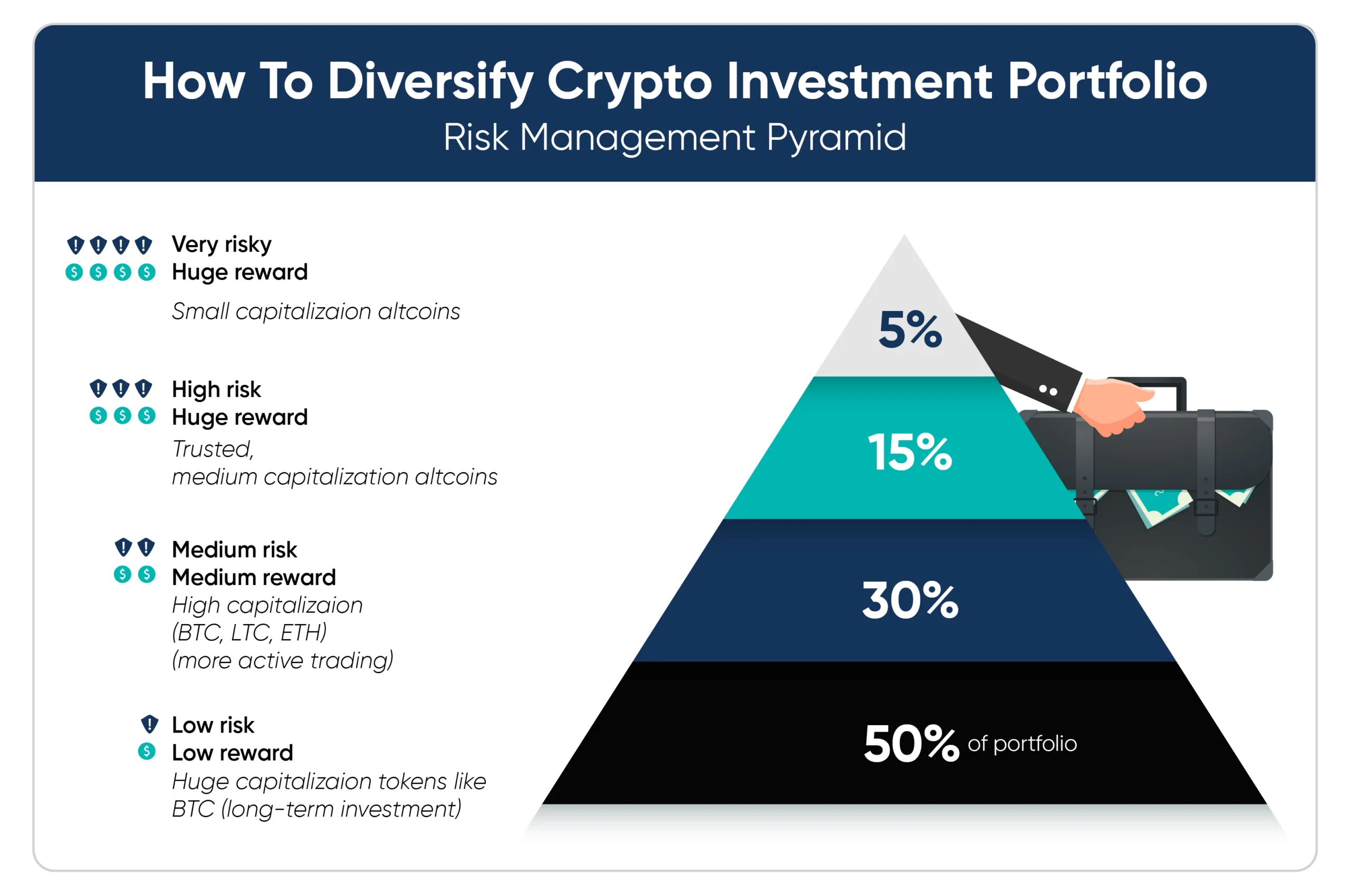
Diversification is a fundamental principle of portfolio management that involves spreading investment capital across multiple digital assets with low correlations to each other. Diversification helps reduce the overall risk of the portfolio while maximizing potential returns by allocating capital to a mix of assets with different risk profiles and return characteristics. Here are some detailed techniques and practical examples to achieve diversification in digital asset investments:
Asset Class Diversification
Asset class diversification involves allocating capital across different categories of digital assets, such as cryptocurrencies, security tokens, and stablecoins. Each asset class offers unique risk-return profiles and can serve specific investment objectives. By diversifying across asset classes, investors can reduce the concentration risk associated with any single asset class and enhance portfolio resilience. Here’s how asset class diversification can be implemented:
Example:
Suppose an investor allocates their portfolio across cryptocurrencies (e.g., Bitcoin, Ethereum), security tokens (e.g., tokenized real estate, equities), and stablecoins (e.g., USDT, USDC).
Cryptocurrencies offer high growth potential but also exhibit higher volatility and risk compared to other asset classes. The investor allocates a portion of their portfolio to cryptocurrencies to capture potential upside while managing risk through diversification.
Security tokens represent ownership rights to underlying assets such as real estate, equities, or debt and offer the benefits of tokenization, liquidity, and regulatory compliance. The investor diversifies their portfolio by allocating capital to security tokens to gain exposure to traditional asset classes in a digital format.
Stablecoins provide price stability and serve as a hedge against volatility in the cryptocurrency market. The investor allocates a portion of their portfolio to stablecoins to preserve capital during periods of market uncertainty or downturns.
By diversifying across different asset classes, investors can achieve a balanced risk-return profile and reduce the impact of market fluctuations on their overall portfolio performance.
Geographic Diversification
Geographic diversification involves investing in digital assets across different regions and jurisdictions to mitigate country-specific risks and regulatory uncertainties. By diversifying geographically, investors can reduce exposure to political, economic, and regulatory events in any single jurisdiction and gain access to global investment opportunities. Here’s how geographic diversification can be practiced:
Example:
Suppose an investor allocates their portfolio across digital assets listed on exchanges in various countries and regions, including the United States, Europe, Asia, and emerging markets.
The investor invests in digital assets listed on exchanges in the United States to gain exposure to established cryptocurrency markets and regulatory frameworks such as the SEC (Securities and Exchange Commission) and CFTC (Commodity Futures Trading Commission).
The investor diversifies their portfolio by investing in digital assets listed on exchanges in Europe to access a diverse range of projects and regulatory environments, including the European Union’s MiCA (Markets in Crypto-Assets) regulation.
The investor explores investment opportunities in digital assets listed on exchanges in Asia and emerging markets to capture growth potential and innovation in blockchain technology and decentralized finance (DeFi).
By diversifying geographically, investors can access a broader range of investment opportunities, reduce concentration risk, and navigate regulatory challenges effectively.
Sectoral Diversification
Sectoral diversification involves allocating capital across different sectors or industries within the digital asset ecosystem to mitigate sector-specific risks and capitalize on growth opportunities in diverse market segments. By diversifying across sectors, investors can gain exposure to various use cases, technologies, and market trends. Here’s how sectoral diversification can be achieved:
Example:
Suppose an investor allocates their portfolio across digital assets representing different sectors or industries within the blockchain and cryptocurrency ecosystem, including:
Decentralized Finance (DeFi): The investor invests in digital assets related to decentralized finance (DeFi) protocols, lending platforms, decentralized exchanges (DEXs), and yield farming opportunities to capitalize on the growth of the DeFi sector and earn passive income through staking and liquidity provision.
Non-Fungible Tokens (NFTs): The investor diversifies their portfolio by investing in digital assets related to non-fungible tokens (NFTs), including digital art, collectibles, gaming assets, and virtual real estate, to participate in the burgeoning NFT market and monetize digital creativity and ownership.
Web3 Infrastructure: The investor explores investment opportunities in digital assets related to Web3 infrastructure, including blockchain scalability solutions, layer-2 protocols, cross-chain interoperability projects, and decentralized storage networks, to support the development of the decentralized internet and enable decentralized applications (DApps) and services.
By diversifying across sectors, investors can capture growth opportunities in emerging market segments, mitigate sector-specific risks, and build a resilient portfolio aligned with evolving market trends.
Investment Strategy Diversification
Investment strategy diversification involves allocating capital across different investment strategies, including long-term hodling, short-term trading, and yield farming, to balance risk and return objectives and optimize portfolio performance. By diversifying investment strategies, investors can adapt to changing market conditions and capitalize on opportunities across various timeframes and market environments. Here’s how investment strategy diversification can be implemented:
Example:
Suppose an investor diversifies their portfolio by allocating capital across different investment strategies tailored to their risk tolerance, investment horizon, and market outlook, including:
Long-Term Hodling: The investor allocates a portion of their portfolio to long-term investments in digital assets with strong fundamentals and growth potential, such as Bitcoin, Ethereum, and select altcoins, to capture the long-term appreciation of the cryptocurrency market and benefit from the adoption of blockchain technology.
Short-Term Trading: The investor engages in short-term trading strategies, including trend following, momentum trading, and scalping, to capitalize on short-term price movements and market inefficiencies in the digital asset market, generating alpha and enhancing portfolio returns through active trading.
Yield Farming: The investor participates in yield farming and liquidity provision strategies on decentralized finance (DeFi) platforms, such as automated market makers (AMMs) and decentralized lending protocols, to earn passive income through staking, liquidity mining, and yield optimization strategies, leveraging the power of smart contracts and decentralized governance mechanisms.
By diversifying across investment strategies, investors can optimize risk-adjusted returns, mitigate downside risk, and adapt to changing market dynamics while pursuing their long-term financial goals in the digital asset ecosystem.
Asset Allocation
Asset allocation is a crucial aspect of portfolio management that involves determining the optimal distribution of investment capital across different asset classes, such as cryptocurrencies, stablecoins, and security tokens. By strategically allocating assets based on risk tolerance, investment horizon, and return objectives, investors can optimize portfolio performance and manage risk effectively. Here are detailed techniques and practical examples to achieve asset allocation in digital asset investments:
Asset Allocation Techniques
Modern Portfolio Theory (MPT)
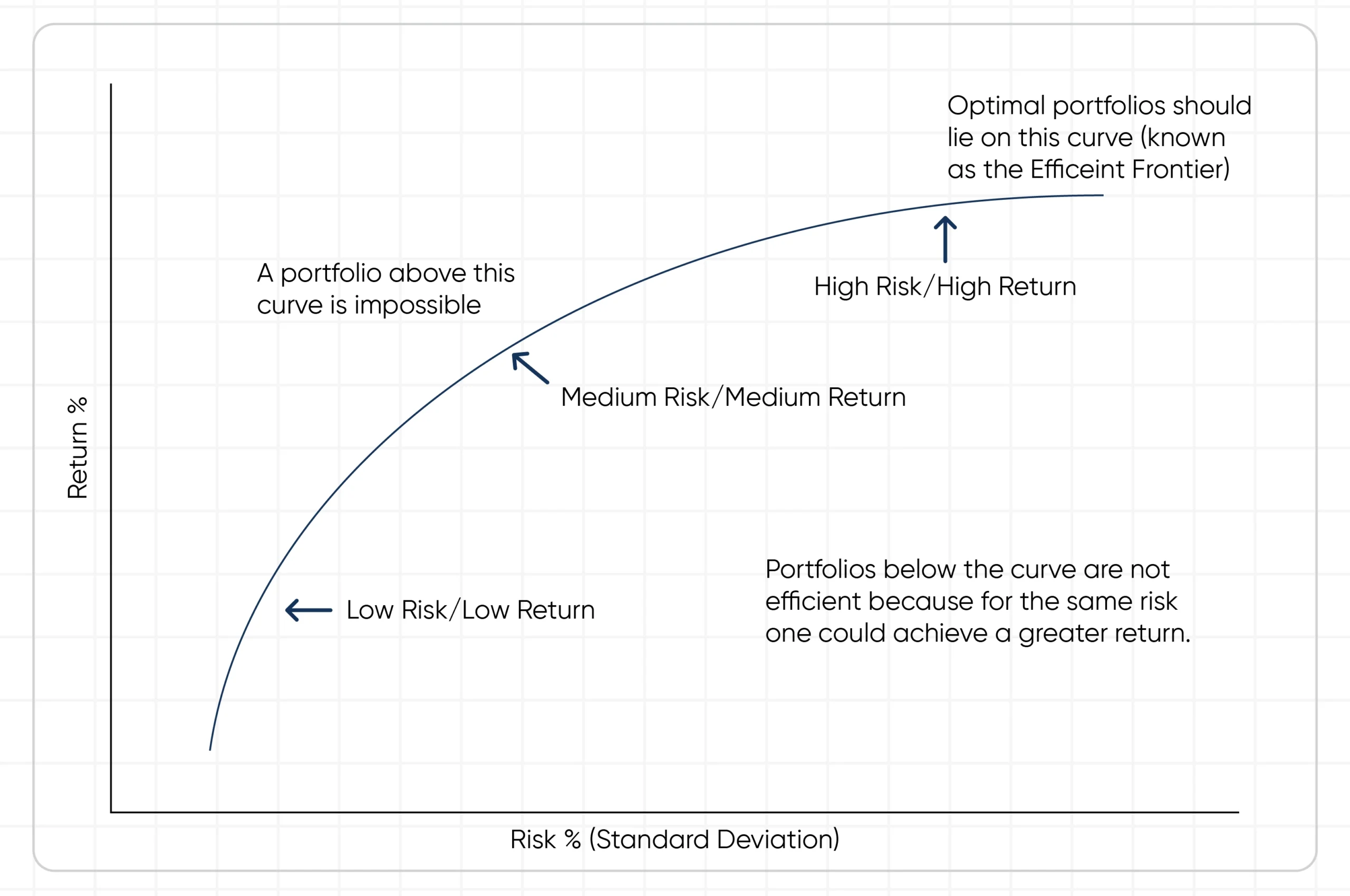
Modern Portfolio Theory (MPT) is a widely used framework for asset allocation that emphasizes diversification and the efficient frontier—the set of portfolios that offer the highest expected return for a given level of risk. MPT advocates for allocating capital across asset classes to achieve optimal risk-adjusted returns. Here’s how MPT can be implemented in digital asset investments:
Example:
Suppose an investor follows Modern Portfolio Theory (MPT) to allocate their investment capital across different asset classes within the digital asset ecosystem:
Cryptocurrencies: The investor allocates a portion of their portfolio to cryptocurrencies such as Bitcoin (BTC) and Ethereum (ETH) to capture the high growth potential and volatility of the cryptocurrency market, aiming for long-term capital appreciation.
Stablecoins: The investor allocates a portion of their portfolio to stablecoins such as USDT and USDC to preserve capital during periods of market uncertainty or volatility and maintain liquidity for opportunistic investments or rebalancing.
Security Tokens: The investor allocates a portion of their portfolio to security tokens representing ownership rights to underlying assets such as real estate, equities, or debt to diversify across traditional asset classes and benefit from tokenization and regulatory compliance.
By diversifying across asset classes based on the principles of Modern Portfolio Theory (MPT), investors can achieve optimal risk-adjusted returns and build resilient portfolios tailored to their investment objectives.
Risk Parity Strategy
Risk parity is an asset allocation strategy that seeks to achieve equal risk contributions from different asset classes within a portfolio. Under the risk parity approach, assets are weighted based on their volatility and correlation to balance risk exposure across the portfolio. Here’s how risk parity can be implemented in digital asset investments:
Example:
Suppose an investor adopts a risk parity strategy to allocate their investment capital across different digital asset classes:
Cryptocurrencies: The investor allocates a portion of their portfolio to cryptocurrencies such as Bitcoin (BTC) and Ethereum (ETH) based on their historical volatility and correlation with other assets in the portfolio, aiming to achieve equal risk contributions from cryptocurrencies.
Stablecoins: The investor allocates a portion of their portfolio to stablecoins such as USDT and USDC to provide downside protection and reduce overall portfolio volatility, maintaining equal risk exposure across asset classes.
Security Tokens: The investor allocates a portion of their portfolio to security tokens representing traditional assets such as real estate, equities, or debt, adjusting the allocation based on their risk characteristics and correlation with other assets in the portfolio to achieve risk parity.
By adopting a risk parity strategy, investors can achieve balanced risk exposure across different digital asset classes and enhance portfolio stability and resilience.
Tactical Asset Allocation
Tactical asset allocation involves dynamically adjusting asset allocations based on short-term market conditions, trends, and opportunities. Tactical allocation strategies aim to capitalize on market inefficiencies and exploit mispricings to enhance portfolio returns. Here’s how tactical asset allocation can be practiced in digital asset investments:
Example:
Suppose an investor employs a tactical asset allocation strategy to adjust their portfolio allocations based on changing market conditions and investment opportunities:
Cryptocurrency Opportunities: The investor increases their allocation to cryptocurrencies such as Bitcoin (BTC) and Ethereum (ETH) during periods of bullish market sentiment and positive price momentum, aiming to capitalize on short-term trading opportunities and maximize returns.
Stablecoin Safety: The investor increases their allocation to stablecoins such as USDT and USDC during periods of market uncertainty or heightened volatility, seeking to preserve capital and maintain liquidity for future investment opportunities or risk management purposes.
Security Token Investments: The investor adjusts their allocation to security tokens representing traditional assets such as real estate, equities, or debt based on changing market dynamics and investment themes, reallocating capital to sectors or industries exhibiting favorable growth prospects and valuation metrics.
By dynamically adjusting asset allocations based on tactical insights and market opportunities, investors can enhance portfolio performance and adapt to evolving market conditions in the digital asset ecosystem.
Risk Management Approaches
Risk management is essential in digital asset investments due to the inherent volatility and uncertainty of the market. Effective risk management approaches help investors mitigate potential losses, preserve capital, and enhance long-term portfolio performance. Here are detailed techniques and practical examples for implementing risk management approaches in digital asset investments:
Volatility Management
Volatility management involves implementing strategies to mitigate the impact of price volatility on portfolio performance and investor psychology. Volatility can be managed through position sizing, stop-loss orders, hedging strategies, and portfolio rebalancing techniques. Here’s how volatility management can be practiced in digital asset investments:
Example:
Suppose an investor employs volatility management techniques to mitigate risk in their digital asset portfolio:
Position Sizing: The investor allocates capital to individual assets based on their volatility and risk-adjusted return potential. Larger positions are allocated to less volatile assets, such as stablecoins or blue-chip cryptocurrencies like Bitcoin (BTC), while smaller positions are allocated to more volatile assets with higher risk-return profiles.
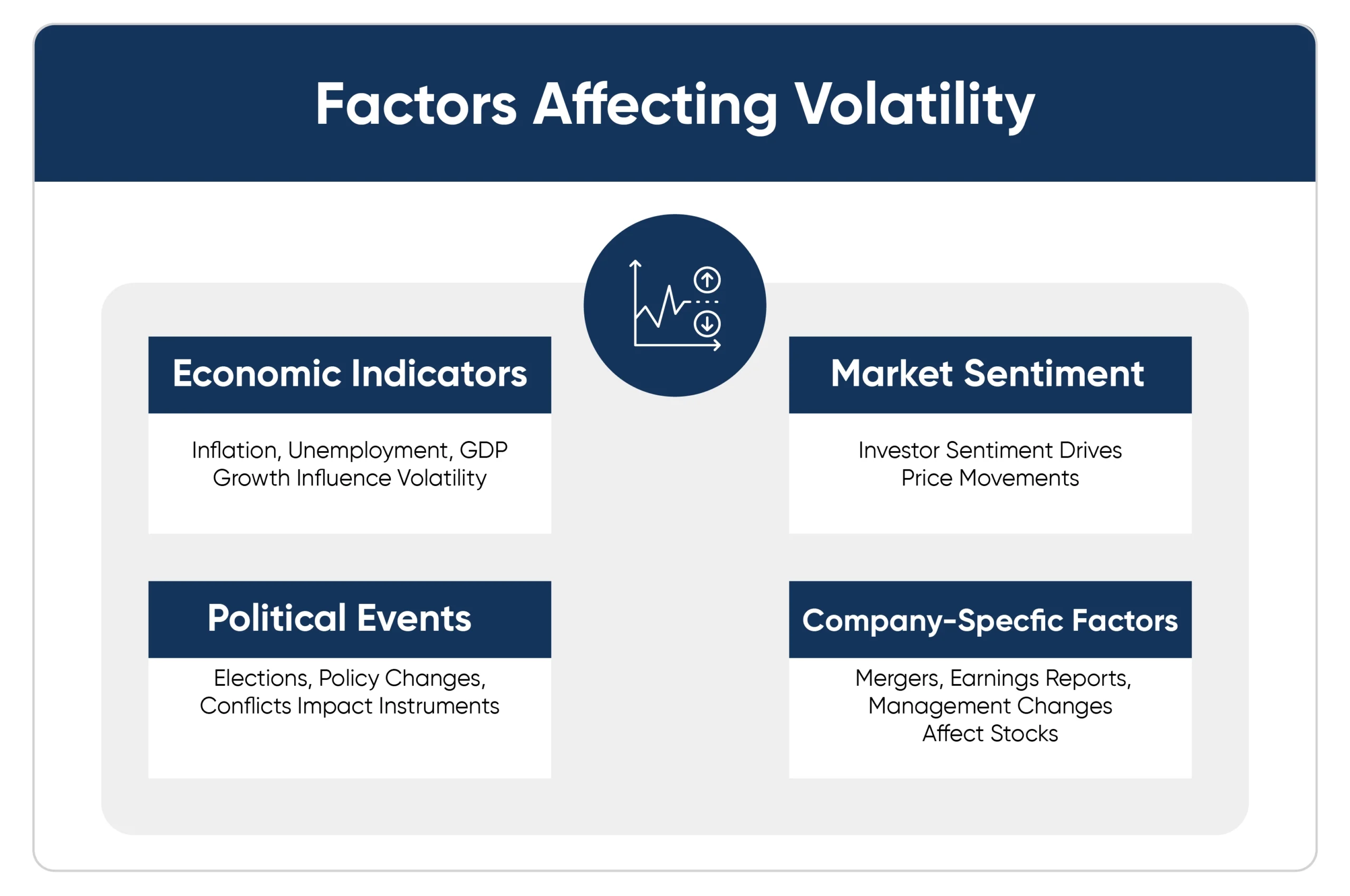
Stop-Loss Orders: The investor sets stop-loss orders at predetermined price levels for each asset to limit potential losses and preserve capital in the event of adverse price movements. Stop-loss orders automatically trigger a sell order when the price reaches the predefined level, helping investors manage downside risk effectively.
Hedging Strategies: The investor utilizes options, futures, and derivatives to hedge portfolio exposure to specific risks, such as currency risk or market volatility. For example, the investor may purchase put options to protect against downward price movements in their cryptocurrency holdings or enter into futures contracts to hedge against adverse price fluctuations.
Portfolio Rebalancing: The investor periodically adjusts asset allocations and rebalances the portfolio to maintain target risk levels and capture opportunities arising from market fluctuations. Rebalancing involves selling overvalued assets and buying undervalued assets to realign the portfolio with the investor’s risk-return objectives.
Custody Solutions
Custody solutions play a critical role in safeguarding digital assets from theft, loss, and unauthorized access. With the proliferation of cyber threats and security breaches, secure custody solutions have become essential for institutional investors and high-net-worth individuals seeking exposure to digital assets.
Cold storage solutions, such as hardware wallets and offline vaults, offer enhanced security by storing private keys offline and out of reach of hackers. Hot storage solutions, such as custodial exchanges and cloud wallets, provide convenience and accessibility but may expose assets to greater security risks.
Institutional-grade custody providers offer multi-signature wallets, insurance coverage, and institutional-grade security protocols to protect client assets and mitigate counterparty risk. Moreover, regulatory-compliant custody solutions ensure compliance with applicable laws and regulations governing the safekeeping of digital assets.
Regulatory Considerations in Digital Asset Investments
The digital asset landscape is a dynamic one, brimming with innovation and disruption. From cryptocurrencies like Bitcoin to stablecoins and security tokens, these assets offer exciting possibilities for investors. However, this new frontier comes with a layer of complexity – the ever-evolving regulatory environment.
As of April 2024, the world of digital asset regulation remains in flux. While regulators acknowledge the potential of this technology, concerns about consumer protection, market manipulation, and financial crime have led to a patchwork of regulations across jurisdictions. Understanding these considerations is crucial for anyone venturing into digital asset investments.
The Evolving Regulatory Landscape
One of the biggest challenges for investors is the lack of global consensus on how to classify and regulate digital assets. Securities and Exchange Commissions (SECs) around the world are grappling with questions like:
Are digital assets securities? This determination has significant implications for how offerings are registered and traded. The Howey Test, a traditional framework for classifying securities, is being applied with varying degrees of success to digital assets.
Who are the key players? Regulators are looking to define and regulate the roles of exchanges, custodians, and Initial Coin Offering (ICO) issuers. Anti-Money Laundering (AML) and Know Your Customer (KYC) protocols are being implemented to combat financial crime.
Key Regulatory Issues
Several key regulatory issues are currently shaping the digital asset space:
Consumer Protection: Investor protection is a top priority for regulators. The high volatility and potential for scams in the digital asset market necessitate robust safeguards against fraud and market manipulation.
Market Integrity: Regulators aim to ensure fair, orderly, and transparent markets. This includes measures to prevent insider trading, pump-and-dump schemes, and market manipulation.
Financial Crime: Digital assets can be attractive for illicit activities due to their pseudonymous nature. Regulators are working to implement AML/KYC protocols to identify suspicious activity and prevent money laundering and terrorist financing.
Taxation: The tax treatment of digital assets varies considerably by jurisdiction. Clear guidance on how digital asset gains and losses are taxed is essential for investors.
The Path Forward
The regulatory landscape is constantly evolving, with several trends to watch:
Increased Regulatory Scrutiny: Expect more stringent regulations from global authorities, with a focus on licensing and registration requirements for companies dealing in digital assets.
Focus on Innovation: Regulators are exploring ways to foster innovation while mitigating risks. Regulatory sandboxes, which allow for experimentation in a controlled environment, are one approach being considered.
International Collaboration: Due to the global nature of digital assets, international cooperation among regulators is essential for creating a harmonized regulatory framework.
Investing in a Regulated Future
While the current regulatory environment presents challenges, it also highlights the growing recognition of digital assets as a legitimate asset class. For investors, here are some key takeaways:
Stay Informed: Keep yourself updated on regulatory developments in your jurisdiction and others you may invest in.
Seek Reputable Platforms: Invest through platforms with strong compliance measures and a proven track record.
Do Your Research: Understand the risks associated with any digital asset investment before committing your capital.
The regulatory environment for digital assets is complex and constantly evolving, but it’s not an insurmountable barrier. By staying informed, approaching investments with caution, and prioritizing platforms with strong compliance practices, investors can navigate the exciting world of digital assets with a degree of confidence.
The Future of Digital Finance
The financial services industry is undergoing a seismic shift driven by the relentless march of digital innovation. From mobile payments to robo-advisors and blockchain technology, digital finance is transforming the way we manage our money. But what does the future hold? Buckle up because we’re about to embark on a journey exploring the exciting possibilities that lie ahead.
The Rise of Embedded Finance
Imagine a world where financial services are seamlessly integrated into your daily life. This is the promise of embedded finance, where financial products and services are woven into the fabric of non-financial applications. For example, imagine buying insurance directly through your ride-hailing app or receiving a microloan while shopping online. Embedded finance streamlines processes, personalizes the customer experience, and unlocks new revenue streams for businesses.
The Democratization of Finance
Digital finance is driving financial inclusion by making financial services accessible to a broader population. Mobile money solutions have been a game-changer in developing economies, providing access to essential financial services for the unbanked and underbanked. Furthermore, fractional ownership of assets through blockchain technology allows even small investors to participate in previously inaccessible markets like real estate or venture capital.
The Rise of Decentralized Finance (DeFi)
DeFi, a rapidly evolving ecosystem of financial products and services built on blockchain technology, is challenging the traditional financial system. DeFi protocols allow users to borrow, lend, trade, and invest without relying on centralized intermediaries like banks. While DeFi offers exciting possibilities, regulatory uncertainty, and potential security risks remain concerns that need to be addressed.
The Power of Artificial Intelligence (AI)
AI is transforming the way financial institutions operate and interact with customers. From automated fraud detection and risk management to personalized investment recommendations and robo-advisors, AI is making financial services faster, more efficient, and more accessible. However, ethical considerations surrounding AI bias and the responsible use of customer data need to be carefully addressed.
The Rise of Central Bank Digital Currencies (CBDCs)
Central banks worldwide are exploring the possibility of issuing their own digital currencies, or CBDCs. CBDCs have the potential to streamline cross-border payments, improve financial inclusion, and enhance monetary policy effectiveness. The impact of CBDCs on the broader financial system and the role of private banks remain questions to be answered.
Embracing a New Paradigm: Security and Transparency
As digital finance continues to evolve, security and transparency will remain paramount. Cybersecurity threats are an ever-present concern, and robust measures are needed to protect user data and assets. Additionally, clear and consistent regulatory frameworks are crucial to foster innovation and build trust among investors.
The Human Touch Remains
While technology will undoubtedly play a central role in the future of finance, the human element will remain crucial. Financial advisors will continue to provide personalized guidance and support, particularly in navigating complex financial decisions.
Making Informed Investment Decisions
Making informed investment decisions in the dynamic world of digital asset investments requires a thorough understanding of market dynamics, risk factors, and regulatory considerations. This section provides practical guidance and best practices for investors seeking to navigate the digital frontier and achieve long-term success.
Conclusion
In conclusion, mastering digital asset investments requires a strategic approach, informed decision-making, and ongoing adaptation to market dynamics. By understanding the various asset classes, investment strategies, portfolio construction techniques, and risk management approaches discussed in this white paper, investors can navigate the digital frontier with confidence and achieve their financial objectives in the transformative world of digital finance.Work with experienced professionals at Kenson Investments for a holistic, easy-to-understand, and transparent experience.



